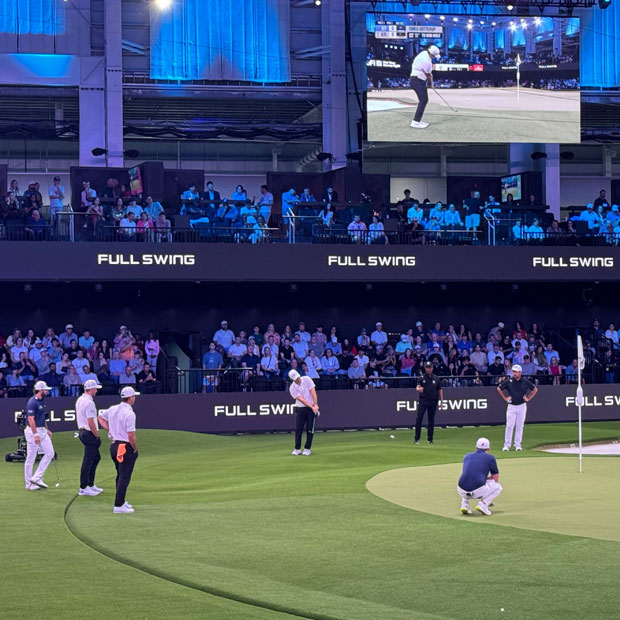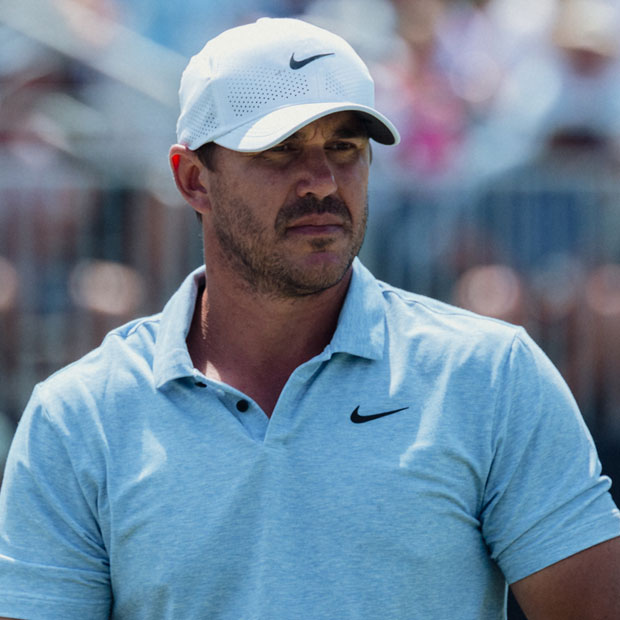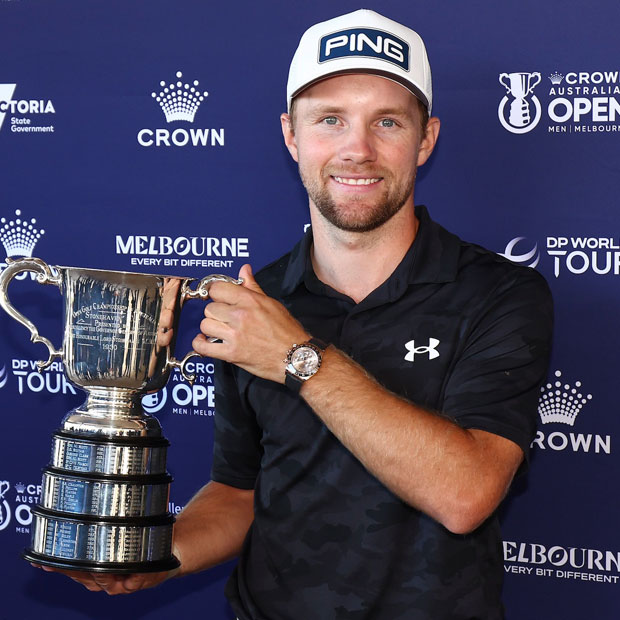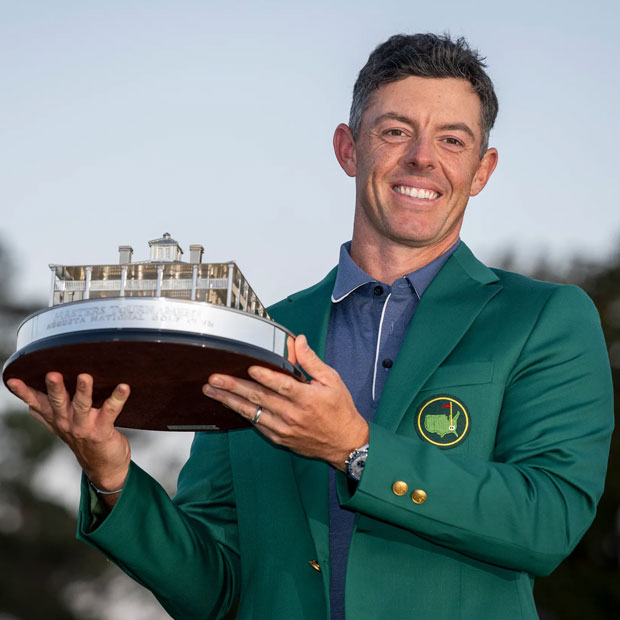An Indisputable Ranking of the Top 10 Men’s Golfers of the Last Decade
Rory or Jordan? Tiger or Phil? Trying to sort the best of the last 10 years


Who are the best 10 players of the last 10 years? This was a question Shane Bacon posed to me recently for his podcast. Ranking players is often a fun endeavor, but a process full of challenges and fraught with the potential for circular, never ending debate. Looking at a list of accomplishments across the careers of multiple players and determining who’s better than the other is, if done earnestly, a tall task. A quick illustration of this challenge is pitting Brooks Koepka against Jordan Spieth. Each has had a wildly impressive start to their career. Koepka edges Spieth in majors, but Spieth has more total wins. What matters? Who has had the better career? Are these even answerable in a conclusive way?
To take on these questions with a good-faith and real effort, I needed to create a system for the ranking and stick to it, my attempt to meld the subjective and objective.
The Points Guys
I created a point structure trying to determine what achievements are worthy of different marks. I settled on a memorableness standard, occasions when there would be dedicated and expanded coverage of a player’s on-course achievements. A major is in a class of its own when it comes to how we understand a player’s career. A Players victory triggers increased coverage and a certain elevated stature. There is an extended shelf life and resonance for wins at WGCs, Olympics, and events such as Riviera or the Memorial. A regular PGA Tour or European Tour win puts you on stage, and contending at a major gets you similar buzz.
Meanwhile, nobody really cares about a string of three top 10s in regular events – we’re talking about the best of the best here, not the guys trying to get into the top 125. For the most part in professional golf, what matters is winning events or contending at the top events. I’m trying to isolate accomplishments and moments that matter most to both the players and golf-watching populace. Jon Rahm’s result at the U.S. Open is what sticks with us, not his strokes gained driving mark in the fourth round. This is how we come to appreciate the greatest players.
So with those events and the attempt to measure the impact of them in mind, I made a points system. Note: This is just one way of looking at someone’s career. There are numerous metrics and statistics to try to determine a player’s legacy. This system is designed to capture a player’s overall relevance to the sport and an easy way to monitor a player’s progress towards other greats of the game.
- Major championship win = 7 points
- Players Championship win = 5 points
- FedEx Cup Playoff, WGC, Olympics, Riviera, Bay Hill or Memorial win = 3 points
- PGA Tour or European Tour win = 1 point
- Top 5 at Major or Top 3 at The Players = 1 point
Considering it again, I may have undervalued the major wins but I can always change this down the road because, well, it’s my system.

The Timeline
It’s not quite a decade but more like 9.5 years…starting at the beginning of the 2013 season, the one without a wraparound schedule that makes it cleaner to adjust. Here’s how the points shook out!
- Dustin Johnson – 61 points
- Rory McIlroy – 54 points
- Brooks Koepka – 44 points
- Jordan Spieth – 42 points
- Jason Day – 38 points
- Justin Thomas – 34 points
- Tiger Woods – 28 points
- Jon Rahm – 27 points
- (tie) – Justin Rose – 26 points
- (tie) – Bubba Watson – 26 points
- (tie) – Patrick Reed – 25 points
- (tie) – Hideki Matsuyama – 25 points
- (tie) – Bryson DeChambeau – 24 points
- (tie) – Phil Mickelson – 24 points
- (tie) – Adam Scott – 24 points
The Top 10
As you would expect, the cream rises in this exercise – identifying a top cohort was expected, the ranking after that is where things can get challenging. In this case, there is considerable separation of the top six players before we get to one or two-point differentials between spots. At the top, there can be separation as well, evidenced by the 17 points between top-ranked Dustin Johnson and third-ranked Brooks Koepka. With DJ and Rory in particular, the case can be made they’re in the middle of their prime. It’s not something you could say is the case for Justin Thomas (6th) and certainly not for Jon Rahm (8th), who is in the middle of his fourth full season on the PGA Tour. Let’s dive into each of these players over the last 10 years.
Dustin Johnson – 61 points in 221 starts
He was the clear top-ranked player. While DJ falls short on majors to Koepka and Spieth, he tops nearly every other metric. He has won an astonishing 11 times in the elevated event category (WGCs, Rivera, Memorial, Bay Hill). On top of that, he has seven top 5s in majors, second only to Koepka. The takeaway here is that when the top players are in a field, Dustin Johnson has often been the best player. Since 2013, his time as World No. 1 has also been the longest at 135 weeks, 36 weeks more than Rory, who is second in this ranking. DJ’s run has been a model of consistency and with the near-misses at a few majors, this margin could be bigger.
But to put DJ’s level of dominance during this exercise’s era in context, let’s compare it to the GOAT, Tiger Woods, during his peak years. From 1999 to 2008, Tiger would have amassed 208 points, over three times the amount of DJ’s last 10 years.
Rory McIlroy – 54 points in 207 starts
For this 10-year ranking, Rory’s five wins in 2012, which included a major championship, are omitted. With that included, he would overtake DJ with 71 points to DJ’s 62, but Shane Bacon set the terms and the cut off was 2013. That earlier and separate period compares favorably to Phil Mickelson’s best 10-year run from ’04-’13, in which he would have earned 77 points.
In a series of Spotlight podcasts on the Shotgun Start during the pandemic, we examined the careers of great players from a prior era. During the research process, I realized all-time greats rarely have longer than a 10-year window of dominance. Based on that, I think we have seen the best version of Rory in that run from 2012 to 2021. While it’s unfortunate to think about in future prospects, that resume is really strong and if he can scrape out a major or two, his final numbers will compare well to Phil Mickelson. It could be framed as disappointing because his early dominance brought Tiger comparisons. Rory might be the first of many golfers whose best golf came in their early-to-mid 20s.

Brooks Koepka – 44 points in 202 starts
Koepka burst onto the scene with a T4 in the 2014 U.S. Open at Pinehurst. It was a sign of things to come. Koepka’s career has been all about the majors. In 31 starts, he has won four times and finished in the top five an astounding 12 times.
Those majors numbers are as close to Tiger as anyone has come. Where he falls short in this ranking compared to others is obviously in the non-major events. It’s confounding but keep in mind, Koepka didn’t become a full-time PGA Tour member until 2015, so his numbers (like a few others) don’t make up a full decade of competition. Koepka has also dealt with injuries more than anyone on this list outside of Tiger and Jason Day. With only two wins and three top 5s coming before the 2017 season, it’s likely that Koepka’s peak 10-year run is greater than his numbers suggest now. As it stands, since 2013, Koepka is a generational star and that’s only likely to get better with a few more “peak” years.
Jordan Spieth – 42 points in 208 starts
Few players in the history of golf have had the success that Spieth had so early in his career, notching two majors, four other wins, and three top 5s in his first three years as a professional. This hot start has largely fueled Spieth’s rise to fourth in these rankings. Unfortunately, since the end of 2017, Spieth has only recorded two wins and four top 5s in major championships. That’s a pace that is far more akin to a player outside the top 10 than one near the top. It begs the question, have we seen the best of Jordan Spieth?
Jason Day – 38 points in 188 starts
Don’t let recency bias get in the way, Day was absolutely dominant. As with Rory, the years from 2013 to the present do not fully cover his most formative 10 years. Of all the players on this list, Day’s 18-month run in 2015-2016 was the best golf we have seen played. He won a major over a red-hot Jordan Speith, a Players, two playoffs events, a WGC, an Arnold Palmer, two other PGA Tour events, and bagged two top 5s at majors! That is a great career, but he did it in 18 months. Day’s game was based around immense power, an incredible short game, and a silky putting stroke. When the injuries increased, it reduced his power and limited the time he could spend practicing on and around the greens.
Justin Thomas – 34 points in 186 starts
JT is firmly in the sixth spot and is one of the bright young(ish) stars on the PGA Tour. Thomas’s pace has stalled significantly since his brilliant 2017, in which he banked five wins, including a major. He wins PGA Tour events at an extremely high clip and has a dazzling tee-to-green game. The putter has acted up in recent years and hampered his chances to win more. If that club can ever get to above-average, he would be scary, as evidenced by his terrific 2017, when he ranked 41st in strokes gained putting. The majors have been confusing – for such an elite tee-to-green player to only have two top 5s, outside his one win, in 24 starts is crazy. Is there still another level for him to ascend to? He is nearing 10 years on the PGA Tour and will we ever see a year better than his 2017?

Tiger Woods – 28 points in 86 starts
Of all his achievements, ranking in the top 10 of this world-renowned list has to be one of them! Tiger made only 86 starts since 2013! For comparison’s sake, Rahm, the next player on the ranking, turned professional in 2016 and has made 136 starts. Tiger’s position here is thanks to his 2013, which included five wins, one of which was a Players. Then, of course, he won the 2019 Masters to get that major in this timeframe. Again, he is here at seventh despite making 50 fewer starts than the next closest player in the top 10!
Jon Rahm – 27 points in 136 starts
As mentioned above with Tiger, Rahm clocks in at eighth despite playing only three full seasons of professional golf. That’s an insane number and on his current pace, he’s working toward a first 10 years that would model similarly to Dustin Johnson’s best 10 years. His combination of supreme driving, accurate iron play, and a solid short game and putting (except this year) make him the best bet to be one of the generational talents of the mid 20s players.
Justin Rose – 26 points in 214 starts
Mr. Morgan Stanley was a paragon of consistency in the 2010s. Along with only Rory McIlroy, Rose was a mainstay in the top 15 of the world rankings from 2011 until 2020. The two big highlights during this time were his U.S. Open win at Merion and the Olympic gold medal in Rio. But he added nine other wins and five major top 5s. The fascinating part of Rose’s resume building was his successful pursuit of speed in the early 2010s, which vaulted him from a fine player to an elite player.
Bubba Watson – 26 points in 205 starts
The ultimate horse for the course! Bubba’s inclusion in the top 10 is largely thanks to two aspects of this ranking: the weight I put in Riviera as a three-point event and my not having a real penalty for missed cuts. Either way, Bubba has had a sneaky great career, winning prolifically, especially when you consider how much less he has contended compared to a player like Rose.
Just missing out…
The players who just missed the top 10 are an eclectic bunch. You have your more veteran mainstays like Patrick Reed, Hideki Matsuyama, Phil, Adam Scott and Sergio Garcia.
Despite two major wins, Mickelson wasn’t a factor elsewhere enough at such a late stage of his career.
If I had counted more than one (Japan Open was credited) of Hideki’s Japan Tour wins, he would have cracked the top 10.
Along with those veterans were a short list of young players who haven’t played enough to accrue the necessary points. These players are many you might expect to be or are poised to be a DJ or Rory of their generation, so let’s get to a little more on them.

Bryson DeChambeau – 24 points in 144 starts
In roughly the same amount of starts as Rahm, Bryson falls just three points short of the top 10. It’s thanks to two great streaks he has put together in his career as almost two different players: his bulk up and long driving years and then his thinner, excellent years that get overlooked because of the more recent and prominent U.S. Open. In 2018 before he bulked up, Bryson won the Memorial, a tournament that requires immense ball-striking skills, and two FedEx Cup Playoffs events. There is an argument that this was actually the best period of golf of his career. Post bulk up, the run of winning the Rocket Mortgage, contending at Harding Park and dominating at Winged Foot would be the counter. Now with a pesky hand injury, sustained while trying to continue to hit the ball farther, who knows where he goes next.
Collin Morikawa – 22 points in 70 starts
An absolutely astounding start to a career. Morikawa has roughly made a third of the starts that you would see in a 10-year window, and projecting the current pace out would net him 66 points and the top spot on this list. An iron-tactician, Morikawa’s strength is one that typically holds for a long time. This is a generational talent whose most impressive skill is his consistency.
Xander Schauffele – 17 points in 133 starts
Opinions on Xander Schauffele vary widely on the golf internet. There is a growing frustration with his wins and how they tend to come against smaller fields. Much of his point total comes from wins at the WGC HSBC (the weakest WGC), the Tour Championship (a 30 person field) and the Olympics (a 60 person field). It has some merit but where I would push back is that Xander often wins and contends when all the best players are on the same course. He burst on the national stage as a lesser-known Web.com Tour grad, Sectional qualifying into the U.S. Open at Erin Hills, which he parlayed into a T5 in his first major. Since then, he’s added five more top 5s in majors in just 18 attempts. He’s likely to be a bottom-end superstar but a superstar nonetheless.
Scottie Scheffler – 15 points in 66 starts
The current flavor of the month among the crop of young talent in golf. He has only been here for a few years, playing his first 60 starts without a win. But now he has rattled off 14 of his 15 total points in 6 starts. Scheffler’s wide array of skills put him along with Rahm as one of the most well-rounded young players. I’d like to see Scheffler do it for longer before putting him on Rahm’s level, but indications point to him being that guy. While the conventional critique is that this is just a hot streak, the last two months are a Tiger-like run that we have really only seen Day and young Rory put together.
◊
Trying to understand where a player ranks in golf history can be a maddening or entirely fruitless process. This exercise and system focuses on the last ten seasons, trying to understand what might separate within a larger group we know were the best players. It’s not advanced analytics, but it is an effort to understand who and what mattered most, and why, after being engrossed in the game my whole life.
Leave a comment or start a discussion
Engage in our content with thousands of other Fried Egg Golf Club Members
Engage in our content with thousands of other Fried Egg Golf Members
Get full access to exclusive benefits from Fried Egg Golf
- Member-only content
- Community discussions forums
- Member-only experiences and early access to events











Leave a comment or start a discussion
Lorem ipsum dolor sit amet, consectetur adipiscing elit. Suspendisse varius enim in eros elementum tristique. Duis cursus, mi quis viverra ornare, eros dolor interdum nulla, ut commodo diam libero vitae erat. Aenean faucibus nibh et justo cursus id rutrum lorem imperdiet. Nunc ut sem vitae risus tristique posuere. uis cursus, mi quis viverra ornare, eros dolor interdum nulla, ut commodo diam libero vitae erat. Aenean faucibus nibh et justo cursus id rutrum lorem imperdiet. Nunc ut sem vitae risus tristique posuere.